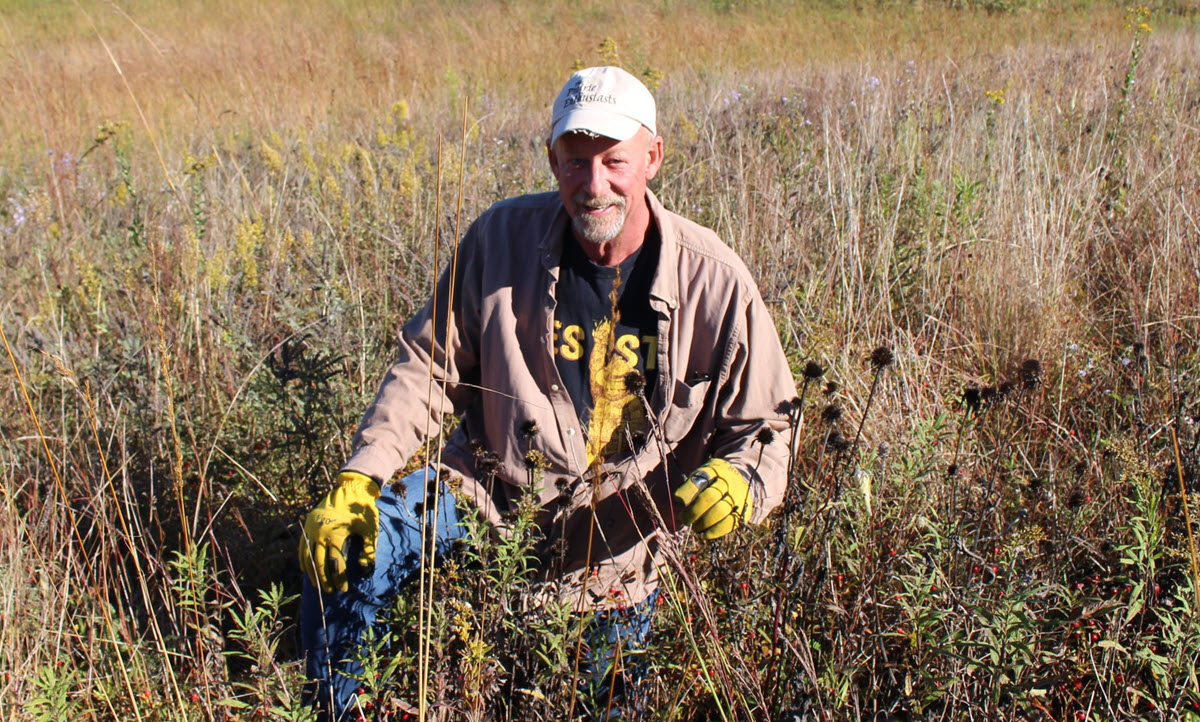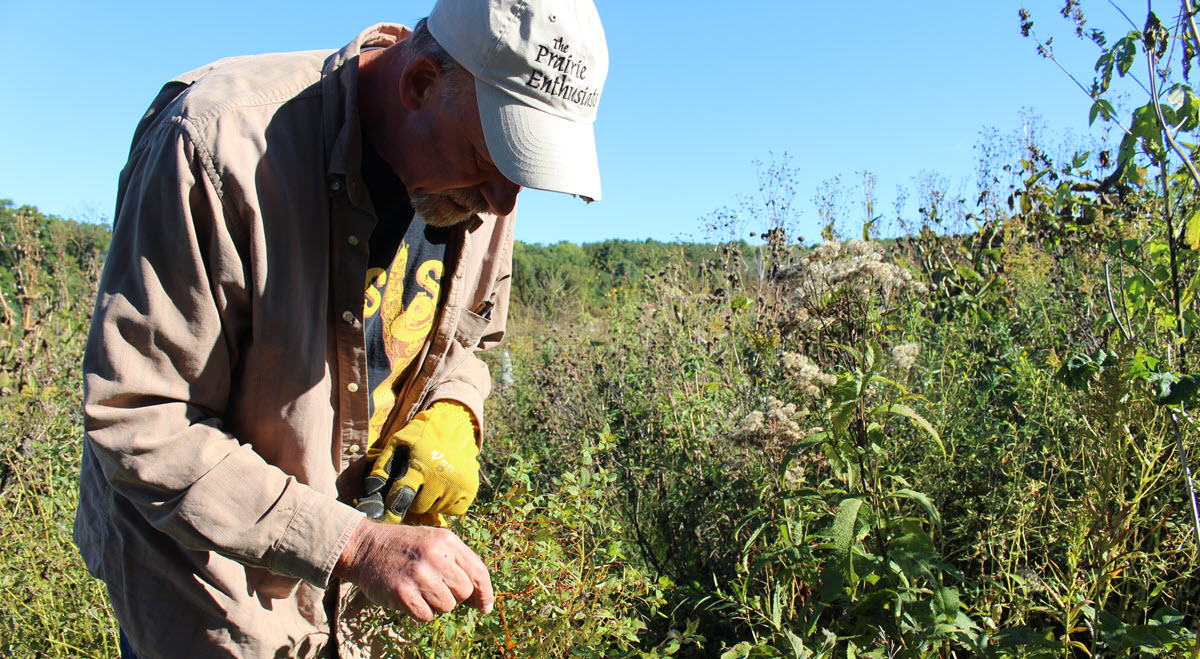It’s been years since Ron Endres of Verona, Wis., retired from a career in Information Technology (IT) – but these days he’s busier than ever. Between July and November, Endres uses his energy to harvest, prepare and separate around 200 different species of seeds from prairies in south central Wisconsin.
Endres is a passionate advocate for restoring the thriving wildlife systems that spread across much of the Midwest before European settlers arrived. Now he spends 10 to 12 hours every day during the harvest season collecting and processing native seeds. Then he gives them away to nonprofits like the Ice Age Trail Alliance, the Driftless Area Land Conservancy, Groundswell, U.S. Fish and Wildlife, and about 70 other parks, schools, arboretums and other conservation groups across Wisconsin.
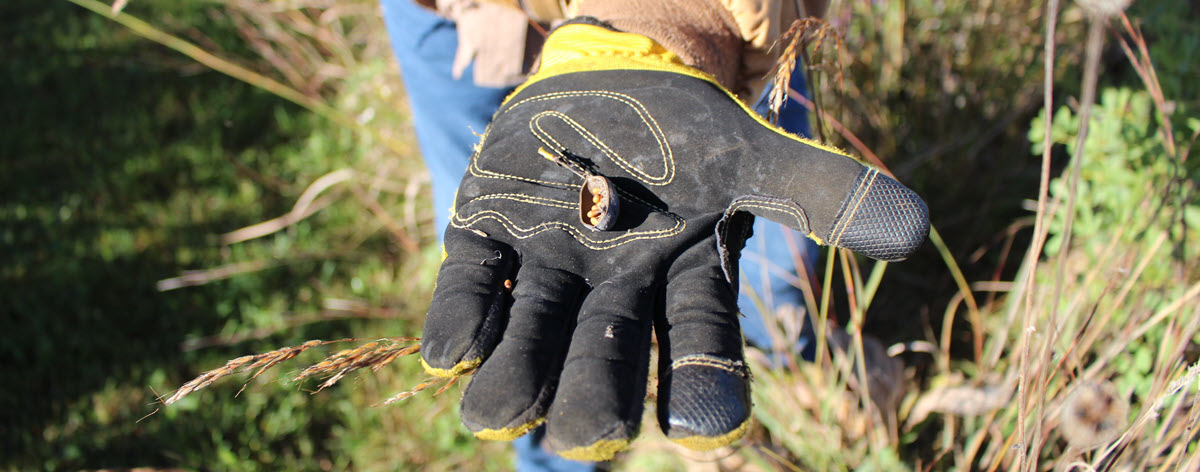
Endres holds a single pod of White Wild Indigo seeds. Each pod contains 25-50 tiny seeds.
The seeds Endres will deliver in 2022 alone have a retail value of over $260,000, but he accepts no money for his efforts. “I operate like a foundation, where groups submit grant proposals and I fill their requests,” Endres said. “I’m in it to supply these non-profits restoration efforts, saving them the cost of seed.”
Prairies provide habitat for hundreds of insects, mammals, birds and other animals. The native plants have deep roots that can survive droughts and help soak up water to prevent major floods. They also advance the process of carbon sequestration which, according to the U.S. Geological Survey, reduces the amount of carbon dioxide in the atmosphere, reversing some effects of global warming.
Only 150 years ago, Iowa was dominated by vast prairie and savanna ecosystems. That created the rich soil that eventually gave Iowa and Wisconsin their reputations as fertile for farming.
Today, nearly all the former prairieland in Wisconsin and Iowa has become farmland. “If Iowa was a thousand-piece jigsaw puzzle,” Endres said, “there’s now one piece left of natural prairie.”
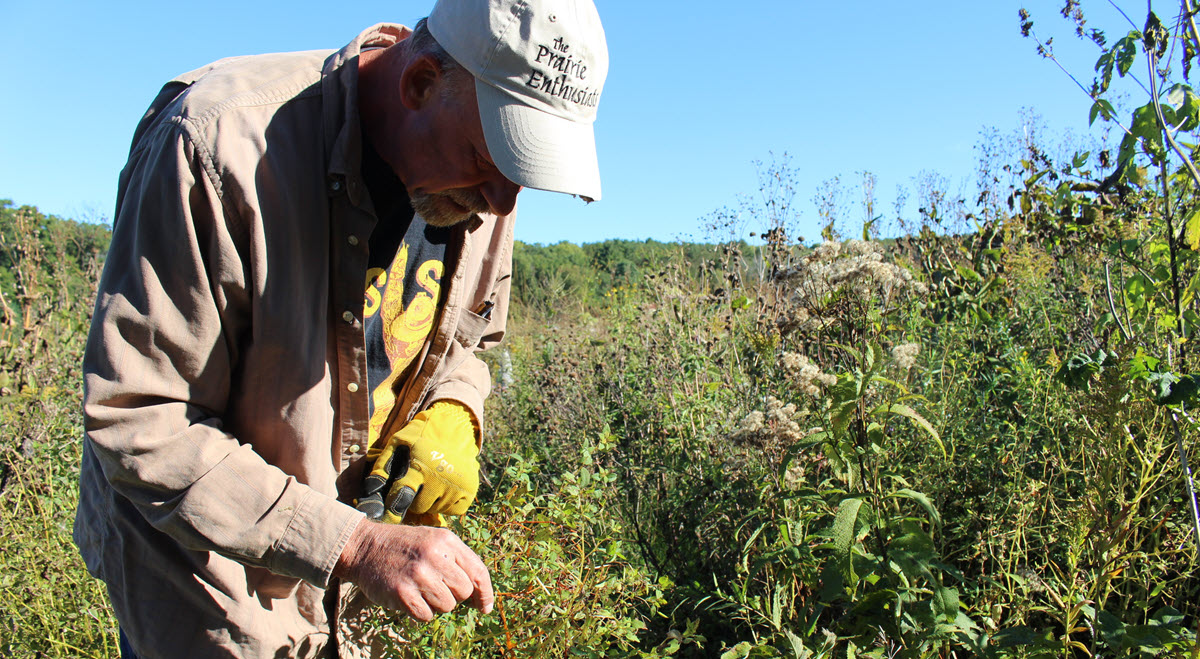
Endres harvests seeds near his home in Verona, Wisconsin.
Endres first became involved in prairie restoration more than 30 years ago, when he and his wife bought 21 acres of farmland. To learn more about restoring and maintaining the prairie on his land, Endres began volunteering for organizations like Prairie Enthusiasts, Dane County Parks, and the Ice Age Trail, which runs right next to his property. Along with learning how to burn a prairie and remove invasive species, Endres learned how to collect and process seeds.
When he saw the financial investment required to purchase prairie seeds, Endres realized how difficult it would be for nonprofits, parks and schools to afford to restore their own prairies. He began to collect seeds himself and give them away for free. Today he’s a one-man prairie restoration operation.
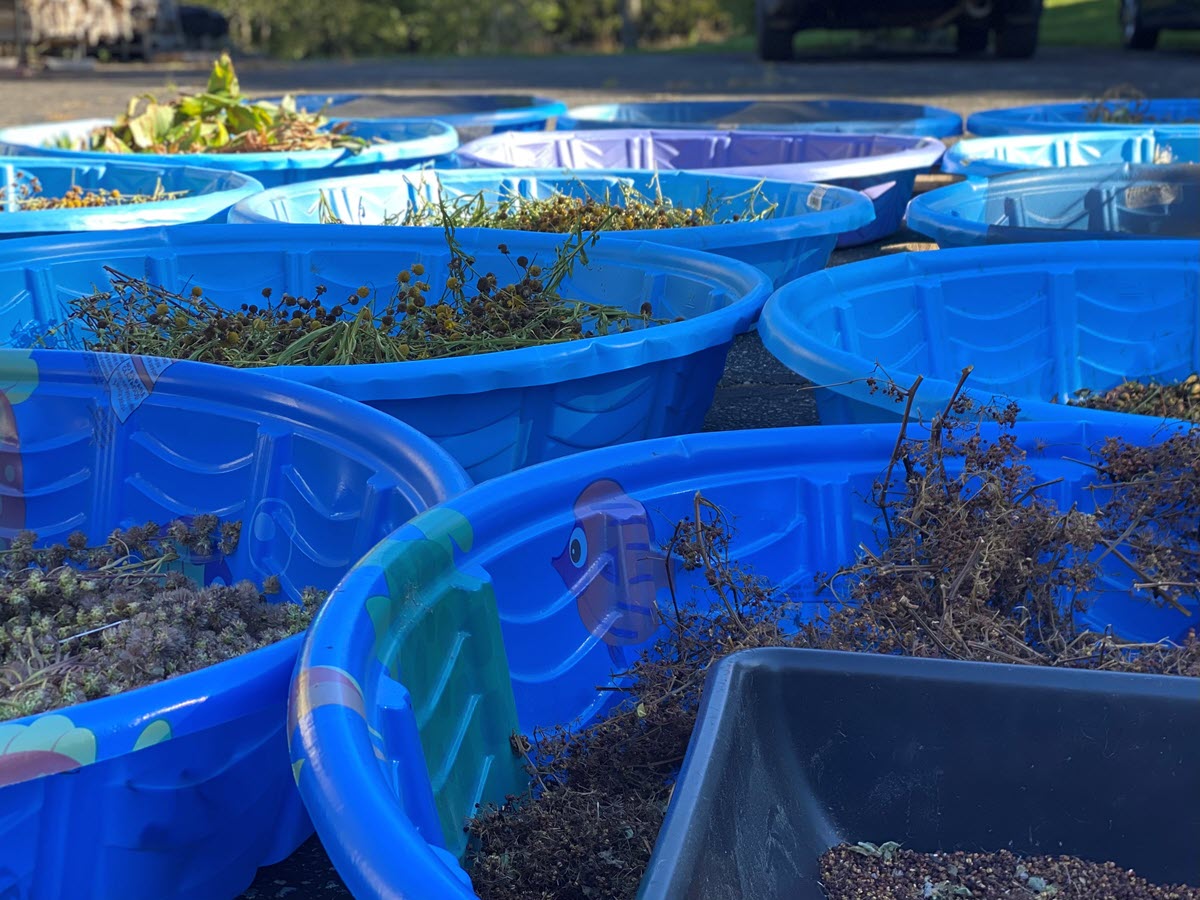
Endres puts different species of seeds in kids' pools so they can dry out in the sun.
“I don’t know anyone who’s crazy enough to do what I do,” Endres said. “I’m all alone. On the one hand that’s intimidating, and on the other it keeps me going.”
The whole process requires a lot of energy, and Endres knows he can’t maintain his one-man prairie restoration operation forever. For now, though, he does everything possible to advance restoration. “When I go to a place where a prairie exists because of the work I did, it’s the most incredible feeling,” he said. “It’s so cool to go to these places and say wow, I kind of did that.”

